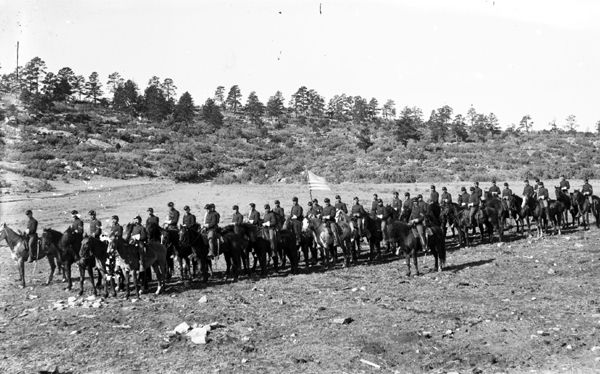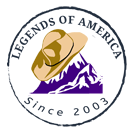Sitting in the shadow of the majestic Sangre de Cristo Mountains in Northeast New Mexico, once stood Turley’s Mill, a favorite stop for trappers and traders traveling along the Taos Trail. It was established by Simeon Turley in about 1830 in Arroyo Hondo Valley on the Rio Hondo about ten miles north of Taos.
“On the other bank of the stream was situated a mill and distillery belonging to an American by the name of Turley, who had quite a thriving establishment. Sheep and goats and innumerable hogs ran about the corral; his barns were filled with grain of all kinds, his mill with flour, and his cellars with whiskey ‘in galore.’ Everything about the place betokened prosperity. Rosy children, uniting the fair complexions of the Anglo-Saxon with the dark tint of the Mexican, gamboled before the door. The Mexicans and Indians at work in the yard were stout, well-fed fellows, looking happy and contented; as well they might, for no one in the country paid so well and fed so well as Turley, who bore the reputation, far and near, of being as generous and kind-hearted as he was reported to be rich. In times of scarcity, no Mexican ever besought his assistance and went away empty-handed. His granaries were always open to the hungry, and his purse to the poor.“
— George F. Ruxton, English explorer, and travel writer, a few days before the Taos Revolt of 1847

Kit Carson, Indian Scout
Simeon Turley was born on the family farm in Madison County, Kentucky, in 1806, the youngest of nine children of Benjamin and Nancy Ann Noland Turley. In 1811, his two older brothers, Stephen and Samuel, left Kentucky and settled in the Boone’s Lick area of Howard County, Missouri. In 1911 Lindsay Carson, the father of famed mountain man Kit Carson, who had also lived in Madison County, Kentucky, moved to the Boone’s Lick area.
When Simeon’s father, Benjamin, died in 1812, his brother, Samuel, went back to Kentucky to settle the estate. After the War of 1812 ended, Samuel returned to Boone’s Lick bringing along his younger siblings, including Simeon, where they grew up.
While they were just children, Simeon Turley and Kit Carson became close friends, an association that lasted throughout Simeon’s lifetime.
Also living there was William Becknell, who would blaze the Santa Fe Trail in 1821. When Becknell returned, the news of his prosperous trip attracted wide attention, and the new community of Franklin, Missouri, near Boone’s Lick, became the birthplace of the Santa Fe Trail. It was not long before a number of area families, including some of the Turleys, were represented in the growing number of caravans heading for Santa Fe and Taos.
Following in the footsteps of his older brothers, Simeon Turley left for New Mexico in about 1829, where he first set up a store in Taos. However, the next year, he purchased land on the Arroyo Hondo Land Grant from Juan de Jesus Valdes and David Waldo for 40 reales.
On the land, located about ten miles north of Taos, he built a store, a two-story grist mill, and a distillery. Approximately 100 yards downstream from the mill, a dam was constructed in the narrow canyon of the Rio Hondo. Although it was only 30 feet across, it was adequate to assure the water supply necessary to power the mill.
The two-story adobe main building, which housed the mill, distillery, and granaries, faced a plaza that was partially enclosed by stables and dwellings, with the open sections blocked by fences and a large gate. Corrals to hold Turley’s various livestock extended south from the complex towards the river. In the north, there was a small vegetable garden.
The distillery was a great success, drawing many mountain men who came to trade furs for his famous “Taos Lightning” whiskey. Simeon’s 188-proof whiskey was flavored with chili powder, gunpowder, and tobacco.
He hired French-Canadian mountain man Charles Autobees to act as the firm’s traveling salesman. Autobees loaded pack mules with flour and whiskey destined for the trading posts along the Arkansas and Platte Rivers to the north and returned to the Rio Hondo with furs and buffalo robes.
In partnership with his brother Jesse, Turley also imported American-made yard goods for sale at Taos and Santa Fe.
Somewhere along the line, Simeon took a common-law wife named Marfa Rosita Vigil y Romero, and the couple would have seven children.
In 1841, in letters to Missouri, Turley complained of business conditions in general and also of the competition of the rival firm of Rowland and Workman, who was sharply cutting flour and whiskey prices to sell their inventory as they wanted to leave for California. After their departure, however, Turley’s affairs greatly improved. This was also due to the strict enforcement of U.S. regulations, which forbade the importation of whiskey into Indian country. Because Turley’s distillery was located on Mexican soil, area traders sought him out.
He was soon doing so well that he opened a store at the new trade fort of El Pueblo at the junction of the Arkansas and Fountain Creek in present-day Colorado, which was used as a collection point for the furs and robes gathered by Autobees. Thus, it became unnecessary to haul these commodities to Arroyo Hondo; instead, they were loaded on Turley’s new wagon at Pueblo for delivery direct to Missouri warehouses, and the wagon brought back merchandise for the store.
By 1846, Turley’s business flourished as traders traveled south to Taos and Santa Fe or north to the Colorado trading posts. That same year, while United States troops were involved in the Mexican-American War, General Stephen Watts Kearny took charge of Santa Fe in August 1846. He soon appointed a civilian government with famed trader Charles Bent as governor and left Colonel Sterling Price in command of U.S. forces as he with his troops for California.
Though the surrender of Santa Fe occurred without a shot being fired, there were many New Mexicans who were unhappy with the change.
A few months later, in January 1847, hundreds of residents rebelled in what is known as the Taos Revolt. On January 19, 1847, local insurrectionists killed Governor Charles Bent and several other authorities in Taos.
Charles Autobees, who was returning from Santa Fe on a whiskey delivery, was in Taos during the revolt and soon rode hard to warn Turley and his men that a mob was approaching the Arroyo Hondo. Autobees then continued on to Bent’s Fort in Colorado. Turley discussed how to handle the incoming rebels with his men, who advised him to close the gate in the outer stockade, board the windows, and pile logs to barricade the entrances to the buildings. Because his relationships with the native population had always been cordial, Turley was reluctant but finally agreed.
Soon 500 Mexicans and Pueblo Indians appeared at the gate, demanding that Turley surrender his men and property in return for his life. Turley refused, and the battle began. Although heavily outnumbered, the Americans held a strong position and could exact a heavy toll from the attackers through the first day. During the night, however, the besiegers gained access to the stables and corrals, killing large numbers of hogs and sheep and setting fire to the mill where most of the defenders were barricaded. Unable to control the blaze and finding their ammunition almost gone, the eight surviving Americans decided to attempt an escape under cover of darkness. Several were killed, but four of them the others were able to get clear.
Tom Tobin made his way to Santa Fe, Willaim Le Blanc to the Colorado Greenhorn settlement, and John Albert, after an arduous solitary journey on foot, arrived in Pueblo, Colorado. At daylight the next morning Simeon Turley, hindered by a crippled knee, was not far from his burning headquarters, which was being sacked by the mob. He soon encountered a Mexican “friend” from whom he attempted to buy a horse. The Mexicans refused but promised to bring help. Instead, he went to the burning mill, where he betrayed Turley’s hiding place to the looters. It was not long before Turley was seized and murdered.

New Mexico Troops
The Taos Rebellion was short-lived. Colonel Price’s Missouri Volunteers, joined by a volunteer militia recruited by Ceran St. Vrain, marched north from Santa Fe to stop the rebels. Engagements were fought at Santa Cruz, Embudo, and at the Taos Pueblo. A separate force of US troops campaigned against the rebels in Mora.
Those killed at the Battle of Turley Mill are buried in a common grave at the Kit Carson Cemetery in Taos. These include William Austin, William Hatfield, Joseph Marshall, Peter Robert, Louis Tolgue, Albert Turbish, and Simeon Turley.
The estate of Simeon Turley — the land, buildings, and other property was signed over to his common-law Mexican wife and her children. “Uncle Dick” Richens Wootton was appointed guardian of the minor children
The site, now owned by Kit Carson Memorial Foundation, Inc., still displays some of the stone foundation walls of the distillery, but the site is closed to the public.
© Kathy Alexander/Legends of America, updated July 2023.
Also See:
New Mexico – Land of Enchantment
Sources:
Find a Grave
Historic Marker at Kit Carson Memorial Cemetery
National Historic Site Nomination
New Mexico History
Taos County Historical Society





